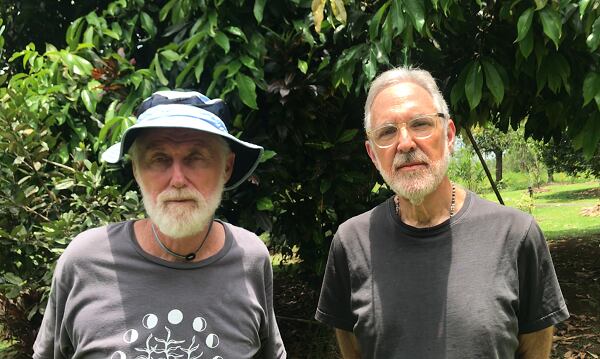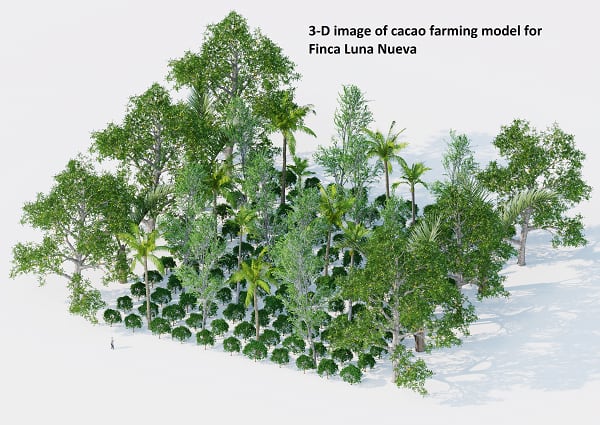Finca Luna Nueva forms part of a regenerative farming project incorporating three other farms in Alajuela Province, Costa Rica, which are all focused on producing botanical crops for extracts and essential oils, as well as a series of food crops with an emphasis on cacao production.
Although the scale of the farming project is currently relatively small, the vision is anything but, with founders Steven Farrell and Tom Newmark aiming to have a significant impact on farming practices throughout Costa Rica and, ultimately, worldwide.

Although food crops currently focus on cacao production, the farm is also growing a variety of fruits, herbs and spices that include jackfruit, breadfruit, turmeric, ginger, peach palm, cinnamon, allspice, nutmeg, cloves, vanilla and rambutan, as well as annatto, which is used as an additive for processed foods, as well as color for cosmetics.
Cacao as the main cash crop
As Steven explains in the video, cacao was first planted at the farm in the early 80s, but has been a crucial part of Costa Rican culture for thousands of years, and has been an important export crop for over 100 years.
“We see it as vital as a part of our polyculture. We will have between 3,000 and 6,000 trees over 35 to 45 hectares. It will be our main crop in that it will be used to create cash for us,” Steven said.
“And we plan to use it to process on the farm ourselves to make a cacao liquor from it, which will then be shipped to suppliers from around the world who are interested in sourcing biodynamic and regenerative chocolate.“

Diversifying beyond cacao
Tom Newmark went on to explain off-camera that, although the cacao production is pivotal, the food production aspirations for the project are for more diversified crops, as well as making a positive impact on the environment.
“Our aims include inspiration, replication, security, biodiversity, flavor, nutrient density, and be beautiful,” Tom said.
“We can elaborate on each of these for pages/chapters/and books, but these key terms, in nutshells, are what we’re all about.”
It's all in the soil health...
But ultimately the crucial element to the success of the farm and the crop yields is the soil, which is pivotal to the whole practice of regenerative agriculture, a point that is stressed in the second part of this article series, which can be viewed by clicking the link at the foot of the page.
And this is where the farm is focusing its efforts in order to produce food crops with heightened nutritional properties, without excessive reliance of synthetic fertilizers and pesticides.
“Rich living soil, with abundant soil organic matter and biodiversity, is the foundation of food production. carbon-rich soil is the “soil water battery” allowing farms to harvest and store rain. carbon-rich soils host the microbiota necessary to deliver nutrients to plants, which in turn can deliver those nutrients to us in the form of nutrient-dense food,” Tom said.
“Carbon in the soil is our best friend, and it stands in opposition to excess carbon in the atmosphere, which is our existential threat. Soil scientists forecast that we only have about 60 harvests of food remaining on this planet if we continue to abuse our soils with industrial agriculture.”
**Watch out for Parts I and II in this series. Published last week, Part I looks at the vision for regenerative farming and it's potential impact on food production, while Part II looks at how crucial soil health is to regenerative agriculture.**
